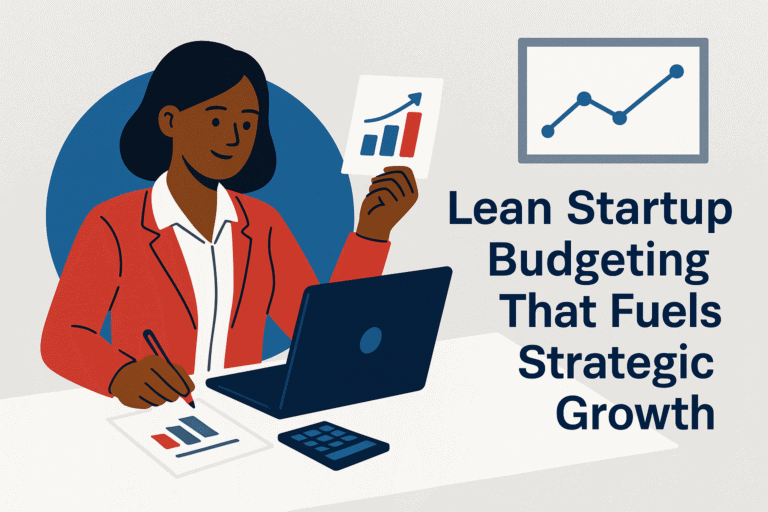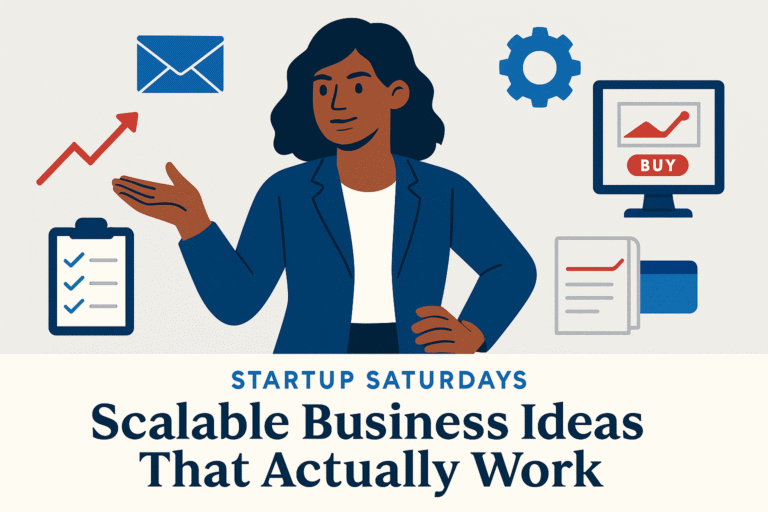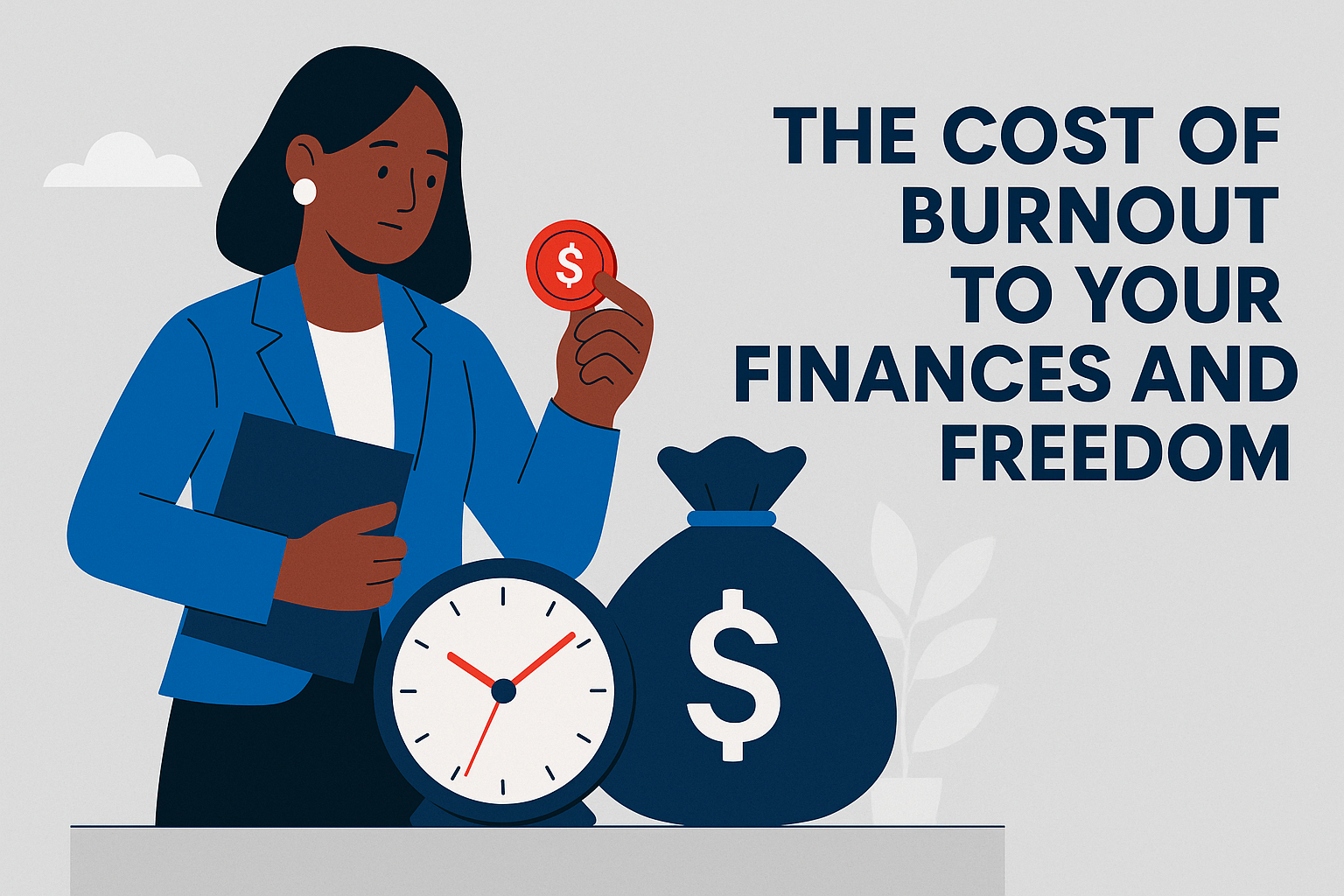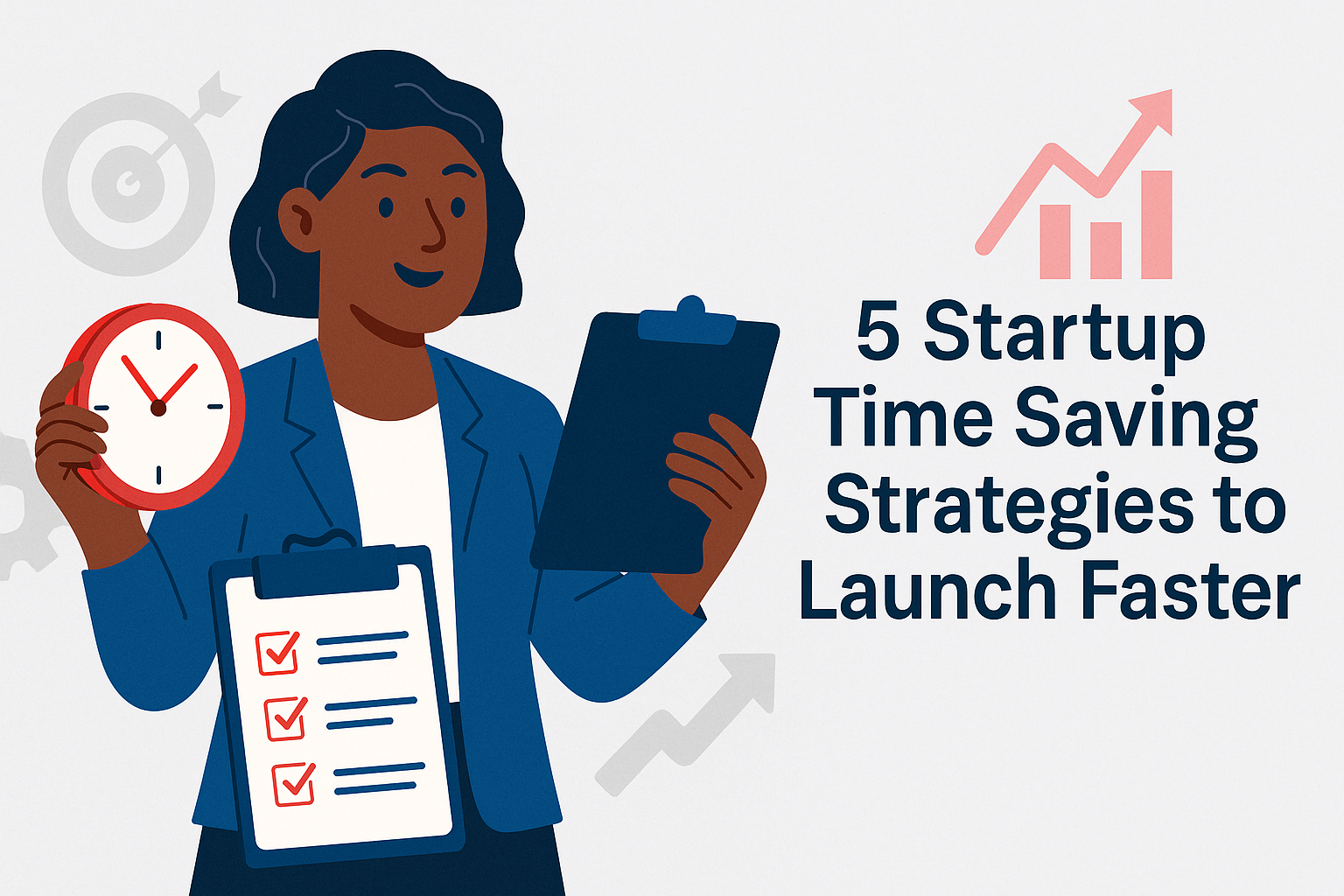Financial Freedom Friday
Getting paid as a startup CEO isn’t selfish—it’s a sign your business is built to last. It’s about protecting your time, your energy, and your long-term financial freedom—even when you’re not drawing a salary yet. That’s why planning your startup CEO compensation from the beginning is so important.
Let’s be honest: not everyone can afford to pay themselves right away. The advice to “pay yourself from day one” might sound good in theory, but in practice? It can feel unrealistic—even out of touch. What if your business isn’t generating consistent revenue? What if your bills are being paid by a job you still have—and still need?
That’s where I started. I built Backbone America while working full-time. That job gave me breathing room. It allowed me to test ideas, invest in tools, and make strategic decisions—without panicking about rent. So no, I didn’t draw a salary at first. But I still planned for one. And that’s the shift I want to talk about here.
Stage 1: Funding the Business While You Work

But I didn’t just spend the money. I recorded every dollar as owner’s equity. If you looked at my books, you’d see clear entries for online tools, professional services, and other purchases made out of pocket—with the source labeled as owner’s equity. That distinction mattered. I wasn’t giving my business a gift; I was investing in something I expected to grow.
And that decision was important for a few key reasons:
When tax season came around, I had a clear understanding of my profit and loss.
It protected my LLC by showing that I wasn’t commingling personal and business funds.
And when the business became profitable, I knew I could withdraw those funds later as a return of capital—not just a lucky break, but a planned return on my investment.
I’m sharing this because new entrepreneurs often misunderstand this stage. It can feel like your business is a money pit. But with intention and tracking, it’s actually your launchpad.
Stage 2: Sweat Equity and the $0 Salary Reality
Not all compensation is financial (yet)
The cost of time, emotional energy, and strategic work that goes unpaid
Tools: Track hours, set compensation targets, log deferred pay
Introduce the concept of sweat equity—with the promise of future payoff
- Why sweat equity matters
Clarify that this is not retroactive salary, but value-building work
Not all compensation is financial—at least not right away. In the beginning, I poured in hours of labor, strategic thinking, content creation, and client outreach. None of it paid me directly at the time, not like my day job.
The IRS won’t let us create future income based on unpaid work, and we can’t legally accrue sweat equity like a paycheck. But we still track it—for our accountability. So we don’t forget what we’ve built. So we can see what it’s really cost. And so when the business starts to grow, we have a reference point for what our time, effort, and leadership have been worth.
- I tracked my time and estimated what I would have paid someone else for it.
- I logged deferred pay so I wouldn’t forget the value of my effort.
- And I set target compensation levels for the future.
Sweat equity matters. It reflects the invisible assets you’ve built—assets that will eventually create revenue, clients, and credibility. But it’s not retroactive salary. It’s the unpaid foundation for future compensation.
Stage 3: From Surviving to Sustainable Pay
Eventually, the question changes from “Can I afford to pay myself?” to “How can I pay myself responsibly?”
When I jump-started Backbone America, my original goal was simple and deeply personal: Make enough to help my son transition into college—$1,200/month. That wasn’t about lavish spending or replacing a six-figure salary. It was about showing up for my family in a meaningful way, and building something that gave me choices.

But before I could get there, I had to start smaller. I had to get comfortable drawing from my business at all. And for me, that meant setting my sights on my first $100.
That first check wasn’t symbolic—it was strategic. It was me saying: “I built this. This work matters. And I can get paid for it—even if it starts small.”
Before I could confidently draw my first $100 from the business, I needed to know the foundation was stable. That meant getting honest about my monthly expenses:
Online tools to run and automate the business: under $100/month
Strategic support—two assistants who helped me move faster and stay focused: about $600/month
Paid ads to generate leads and test my offers: about $500/month
That brought my monthly baseline to $1200. I added a small savings cushion of $300, because I never want to operate on empty. And then I factored in the goal: my first $100 draw.
So I set my minimum monthly revenue target at $1,600 before I felt comfortable taking my first startup CEO compensation draw.
That number wasn’t random. It was the line between surviving and stepping into CEO territory—even at a small scale. It said: “You’ve covered your costs. You’ve got a buffer. And yes—you can pay yourself.”
When you’re considering your own readiness to take well-deserved compensation, look at a few key factors:
Are your core business expenses covered?
Do you have consistent monthly revenue?
Can your profit margins absorb your pay without cutting into sustainability?
Do you have a cash cushion for the unexpected?
And when you check those boxes—even modestly—commit to receiving that first compensation. Don’t brush it off. Don’t shrink from it. You’ve earned it. As a startup business owner, your work has value from day one—and honoring that value is the first step toward building a business that can truly support you.
Stage 4: Compensation as Responsibility
When I first started my business, I’ll admit—I was living on hopium. I hoped it would work out. I hoped all the hours, all the money, all the energy I was pouring in would someday pay off.
But hope isn’t a strategy. It’s a mindset, and it kept me going. When I finally paid myself—just $100, my mindset shifts. I had my first startup CEO compensation. Suddenly, I wasn’t just running on belief. I had proof.
“This business isn’t just functioning. It’s profitable. It’s working. I built a system that pays.”
And with that shift, I stopped seeing compensation as a bonus—something I’d only earn if I hit some vague, distant milestone. I started seeing it for what it really was: a responsibility.
Not just because my goal was to use it to help pay for my son’s college tuition and living expenses (though that mattered deeply), but because that first payment set the foundation and expectation for what I was building: a business that could support me, not consume me.
Getting paid gave me clarity. It boosted my motivation. It reinforced the structure I needed to move forward with intention.
Because at the end of the day, compensation isn’t a perk—it’s a signal. A signal that what you’ve built is working—and that you’re building it to last. And for me, sustainability was the first milestone on the path to true financial freedom.
Bonus: How Startup CEOs Actually Pay Themselves
Let’s talk about the mechanics of compensation. Startup CEO compensation looks different depending on your business structure—and while I’m not a tax professional, I can share how these structures typically work in real life.
Sole Proprietor

You don’t take a formal salary—you just transfer money from your business account to your personal account.
Everything the business earns (after expenses) is treated as your personal income.
You can (and I encourage you to do so) separate accounts and track expenses, but legally, it’s all one entity.
Because it’s so fluid, it’s easy to lose the sense of structure. You might end up paying yourself only what’s left over—if anything. Having separate accounts helps you see the you’re receiving the compensation you’ve earned and not just taking whatever.
Corporation (S-Corp or C-Corp)
If your business is incorporated (or your LLC has elected corporate taxation), things get more structured.
As the owner, you’re considered an employee of the business.
You must pay yourself a reasonable salary through payroll.
You can also take distributions (S-Corp) or dividends (C-Corp) from profits, which are in addition to wages.
Corporations come with more paperwork, compliance, and administrative costs than a Sole Proprietor or LLC.
Limited Liability Company (LLC)
An LLC is unique because it’s flexible. You can choose to:
Be treated like a sole proprietor (Schedule C, owner’s draws)
Be taxed like an S-Corp or C-Corp later on
Right now, I’ve chosen to keep things simple. I operate my LLC with the default structure—meaning I take owner’s draws instead of a salary. That means:
I don’t run payroll
I transfer funds to myself when the business has enough surplus
I plan my draws intentionally, so they’re aligned with goals—not just based on what’s left in the account
Looking Back: What I’d Do Differently
If I had to start again, there are a few things I’d absolutely do differently—and every one of them ties back to how I treated my time, my energy, and yes, my compensation.
I would have started tracking the moment I added value—not just the moment I spent money. The time I gave, the assets I created, the systems I set up—those were investments too. But I didn’t log them, so I don’t have a true measure of the investment I’d put into everything I’d built.
I would have paid more attention to what was actually generating revenue. It’s easy to stay busy, but that’s not the same as being profitable. Once I started tracking which offers converted and what activities led to sales, I finally understood where to double down.
I would have invested in marketing sooner. Not just tinkering with tools or testing freebies—but confidently putting dollars behind offers I believed in. That shift alone changed the trajectory of my sales, which goes back to the point I made for generating revenue.
And most of all, I would have created a compensation plan earlier. Not a vague hope that I’d “get paid someday”—but a structure. A commitment. Something measurable that reminded me I wasn’t just working in my business—I was building a business designed to pay me back.

If you’re ready to create that kind of clarity for yourself, the Business Executive Toolkit will help you set SMART goals, track what actually drives revenue, and stay focused on the actions that support your pay, your priorities, and your peace of mind.
Final Thoughts: Why Startup CEO Compensation Must Be Planned
You don’t earn startup CEO compensation just by surviving hardship. You earn it by designing a business that’s built to pay you—intentionally, sustainably, and without apology.
The journey might start with $0. But it shouldn’t stay there.
Compensation isn’t the cherry on top. It’s the structure that keeps you moving, the proof that what you’re building has value, and the foundation that makes your financial freedom possible.






